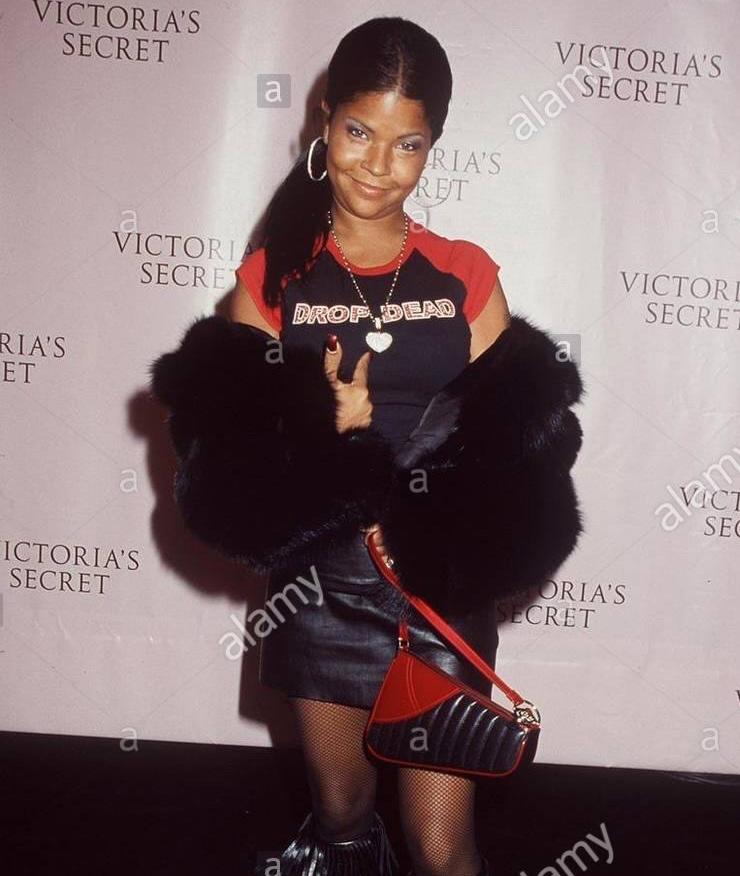
3 minute read
The Birth of Streetstyle
The Birth Of Streetstyle
There is no denying that hip-hop and There is one woman in fashion who many fashion go hand in hand. Today, we can clearly see the vast influence that hip-hop has had on the fashion industry. Sneaker culture, baggy jeans, chunky jewelry and so much more have their origins in these genres.
Advertisement
The collaboration between musicians and stylists in the 1990s has paved the way for other hip-hop and R&B artists to express themselves today. In the late ’90s, it was normal for R&B artists to be seen in dress suits and hard bottom shoes. Just look at Soul 4 Real’s “Candy Rain” music video or (a personal favorite) Mint Condition’s style in their “Breakin’ My Heart” video. In the music video you can see the group wearing suit jackets, collared shirts, slacks and dress shoes. With hip-hop came the alternative trends that offset the norm for most artists at the time. Artists in the ’90s such as Aaliyah, Lil Kim and Mary J. Blige influenced a generation and those to come to incorporate their own style into their brand. Musicians in the genre popularized what is known as “streetwear” today, but we cannot forget to pay homage to those who worked with the artists to put looks together and create a lasting impact. people feel made a huge contribution to streetwear, and that woman is Misa Hylton. While listening to The Business of Fashion Podcast (BOF) episode “Misa Hylton’s Enduring Impact on Fashion,” I was able to learn about Hylton and her creative process. According to The Business of Fashion podcast, Hylton grew up in Mount Vernon, New York, with her mom and would go to stay with her dad from time to time in East Orange, New Jersey. During her time in New Jersey, she was exposed to styles in the hood that she began to put her own twist on. For Hylton, her first time working with styling was with what she put on her body, and she first started styling her family and friends. She would put together her own pieces and even made prom dresses for her friends. As an adult, Hylton began to style R&B artist Mary J. Blige. Hylton worked with Blige to incorporate what was being worn in the streets into what she would be wearing on stage and on the red carpet. Blige and Hylton were able to incorporate street style into Blige’s first album. For once, girls in the hood felt seen. This exposure is what Hylton believes started the merging of fashion houses and street style. Another star who resonated with the looks Hylton was putting together was Lil’ Kim. The two worked together to create groundbreaking looks with the use of chunky jewelry, monochromatic looks and colored hair. Hylton’s style went against what was “feminine.” Wearing baggy pants, oversized shirts and even bringing leather into the mix, was a step in a new direction. This look is what Hylton calls “tomboy chic” and artists like Aaliyah incorporated this into their brand as well. At the time, these looks were not
taken seriously by the fashion industry. It was hard for Hylton to forge her own path; brands did not want to work with her because they did not see streetwear as something legitimate. Hylton would be invited to fashion shows wearing outfits she styled, only to return to the following year to see those same looks replicated on the runway. Hylton believes the money that Black creatives were able to generate is what first caused fashion houses to incorporate street style into their brands, creating streetwear as a luxury! Although they were biting off of her style, she still struggled to get into any fashion houses to design pieces. One brand, MCM, finally allowed Hylton to work her magic (they even opened their archives for her) and the rest is history!
Designers like Hylton made it possible for hip-hop and R&B artists to showcase their own alternative styles. By bringing alternative styles to the forefront, Hylton opened a door for others to follow through. Rico Nasty, Doja Cat and Lil Uzi are just a few of the artists who exemplify how big of an impact Hylton and other designers like her have made. Although their styles are not exactly the same as what she was doing, it still has an alternative element. Her desire to represent youth culture and even add in a “rock element” into her pieces created some big ass waves and we’re still seeing ripples from them today.








